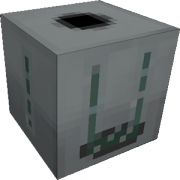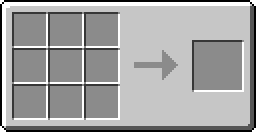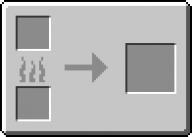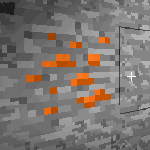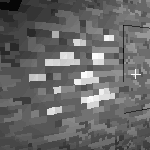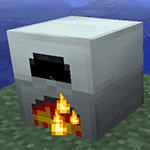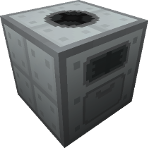User:Subignition
Hi there. There isn't a whole lot to say here. My Minecraft name is subignition and I'm not a very creative builder.
All I ask is that you refrain from editing content on this page; comments, questions, suggestions, and criticism can be raised on my talk page.
Tutorial:First Steps (WIP)[edit]
Welcome to IndustrialCraft²! Now that you've finished installing the mod (you have installed it, right?), let's get you acquainted with some of its basic features!
By the end of this tutorial, you will have been quite thoroughly introduced to the workings of IndustrialCraft², as well as several of the basic machines and concepts involved in their construction and use. Let's get to it, shall we?
Before You Begin[edit]
This tutorial will assume that you have a basic familiarity with playing "vanilla" Minecraft.
It should be noted that IndustrialCraft² works just fine with both new worlds and existing ones! However, it's recommended that you start a new world to quickly enjoy all that IC² has to offer.
If you want to use a world that already exists, you should know two things:
- The new trees and ores that this mod adds will only show up in chunks generated after the mod was installed. If your world is large, you may need to travel for a long time before you can even get started!
- Remember to back up your world folder before playing with IC² for the first time! It is not easy to remove all the custom content a mod adds, and your world may not be playable with a "vanilla" Minecraft.jar after chunks are generated with this mod, or mod-specific items are placed in the world.
For the purposes of this tutorial, we'll assume you're choosing to start a new world.
The First Day[edit]
So you've picked a name and possibly a seed for your world, and you've just loaded in and are starting to look around. If you're playing in Survival mode, on a difficulty above Peaceful, you should spend the first day doing what you normally do; gather wood, make some tools, find food and shelter, etc.
While you go about your business, keep an eye out for trees with dark bark and unusual orange spots on them. They're rubber trees, and they show up most often in Swamp biomes. Remember where these trees are if you spot any, as they'll be important soon.

Burning Rubber: The Extractor[edit]
Now that you have a shelter adequate to protect you from the elements (and possibly also the Creepers), let's revisit the trees I mentioned earlier. First you'll need a Treetap, which requires five Wooden Planks arranged thusly:
| Treetap |
|---|
Find a rubber wood block with an orange spot like the one above, and right-click it with a treetap equipped to harvest between one and three pieces of Sticky Resin. Smelting one piece of resin in a furnace will yield one piece of Rubber. However, since rubber is one of the major components in circuitry and wires, we definitely want an Extractor so we can get triple the amount of Rubber we get.
Let's look at what exactly an Extractor requires, and the recipes for the parts that it's made of:
Okay, wow, that's kind of a lot of stuff. Unfortunately this is the point where I give you an assignment. Fortunately, this is also the part where you get to have fun looking for the new ores! Get yourself an Iron Pickaxe so you can mine Redstone, then go hunt down:
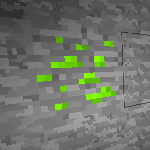 Uranium Ore block. Not necessary right now, but if you find any, save it for later. Much, much later. Requires Iron pickaxe or better. |
- 3 Copper Ores
- 9 Iron Ores
- 6 Sticky Resin
- 2 Redstone Dust
- 20 Wooden Planks
- Enough fuel to smelt everything properly. Don't forget that Refined Iron requires you to smelt Iron Ore twice.
That should be enough to make yourself an Extractor. Be careful where you place it, because you cannot get it back if you destroy it with any of the tools you currently have. Set it down somewhere fairly spacious.
Don't feel bad if you came back with way more materials than I asked for, because if you did, you've got a head start on the NEXT machines we're building. You see, Extractors are cool, but they run on electricity. You could use redstone dust to power your Extractor for a little while (it can be sacrificed for a small amount of electrical energy), but wouldn't you much rather have an efficient, and possibly reusable, solution to this problem?
Batteries and Generators: Shockingly Useful[edit]
Luckily, such a solution exists. But first, let's talk about electricity for a little while.
The EU (Eelectrical Unit) is the quantity used to represent electrical energy in IC². As you continue to build more and more sophisticated technology, you will eventually be able to produce power through various methods, store it in blocks and items, and harness it to do amazing things by connecting your contraptions with electrical cabling! (Beam me up, Scotty.)
As a reference, one piece of Coal or Charcoal is worth 4000 EU. In a traditional Furnace, a piece of coal is worth eight smelts.
One smelt takes ten seconds, so we can say 80 seconds = 4000 EU, or in other words, a normal Furnace uses 50 EU per second, or 2.5 EU/s (Remember, EU/s is per tick, not per actual second.)
So you have two options now -- there are both disposable and rechargeable batteries available to use. However, we don't have a machine necessary to create materials for the disposable batteries yet!
| Rechargeable (RE) Battery |
|---|
Well this isn't very convenient, the battery is empty when we craft it! How do you get EU into a battery? Enter the Generator:
| Generator | |
|---|---|
| Iron Furnace | |
Notice that not only does the Generator require a Rechargeable Battery of its own to create, but that there are several different ways to combine materials to end up with a Generator.
To use a Generator, simply place a combustible fuel into the bottom slot, the same as you would use a furnace. As electricity is generated from the fuel, you will notice the red bar on the Generator GUI begin to fill. This is the storage capacity of the Generator, which is simply how much EU it can hold without wasting any.
There are two ways to use the EU stored inside a Generator like this:
- Transfer the EU to a RE Battery or other energy-storing item by placing it in the top slot to charge. (A RE Battery has a 10,000 EU capacity, which is roughly three pieces of Coal.)
- Connect the Generator's power output to the power input of another machine using cable.
- Be careful about how much power you use, connecting a machine to a bigger power source than it can handle will cause an explosion!
So, I suppose by now you're wondering what it is we need to make ourselves disposable batteries. "Surely it can't be that much more difficult," you say. And you're quite right. There's only one more machine left to cover in this introductory tutorial... and it is...
Boil 'Em, Mash 'Em: The Macerator[edit]
| Macerator |
|---|
The Macerator is one amazing machine. Trust me when I say I saved the best for last. And for good reason: compared to the Extractor, the Macerator is a fairly EU-hungry beast! It wouldn't have done us much good to make ourselves one of these before we had the means to power it. It's probably a good idea to make several Rechargeable Batteries so you can recharge one on a Generator while another powers the Macerator. Or, depending on what fuel is available to you, you might simply connect it directly.
Either way, this machine is amazing:
- It pulverizes most ore blocks into two Dusts, which each can be smelted into an ingot at a furnace. This effectively doubles the amount of ingots you get from mining ore.
- Coal dust can eventually be used to make Industrial Diamonds.
- It reduces Cobblestone and Sandstone back down into Sand.
- It makes Flint from Gravel.
Two very convenient things are made possible with dust. First, you can combine Copper and Tin dusts at a 3:1 ratio to create Bronze dust:
| Bronze Dust |
|---|
This smelts into Bronze ingots, which can be used to make tools and armor. The products will perform slightly slower than Iron but are significantly more durable. They can break the same things.
In addition, and you've been waiting for this a while... You can make a wrench out of bronze ingots that allows you to (usually) recover placed machinery without destroying it!
| Bronze Wrench |
|---|
And finally, you can combine coal dust with Redstone dust and Insulated Copper Cable in various ways to create disposable (1,000 EU) batteries:
| Single-Use Battery | |
|---|---|
Alpha and Omega: Wrapping Up[edit]
We've gone from humble beginnings to promising places. It wasn't that long ago that we were staring at an oddly shaped hole in a tree and wondering what it was for. But we've still barely scratched the surface.
I have only covered three of dozens of machines it is possible to build! I haven't even touched on any of the unique weaponry and armor you can make, or the machines that do busywork for you... there are even teleporters and nuclear reactors for the particularly talented engineers among us.
Check the navigation box right below for an overview of the things this mod has to offer... and good luck!
| |||||||||||||||||||||||||||||||||||||||||||||||||||||||||||||||||||||||||||||||||||||||||||||||||||||||||||||||||||||||||||||||||||||||||||||||||||||||||||||||||||||||||||||||||||||||||||||||||||||||||||||||||||||||||||||||||||||||||||||||||||||||||||||
